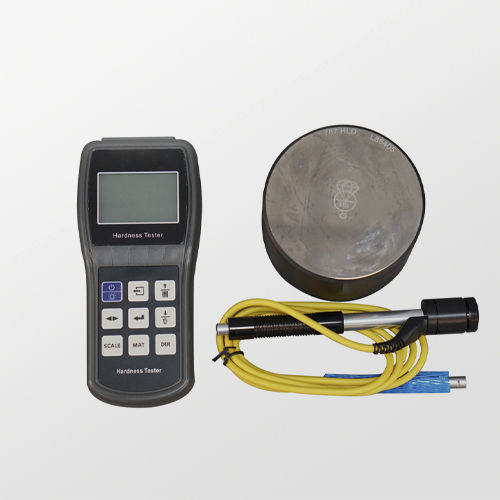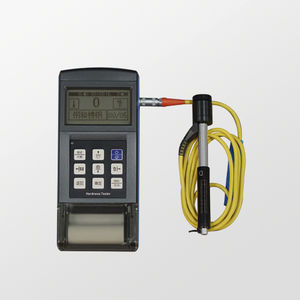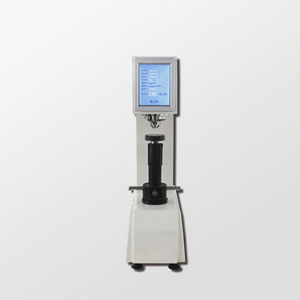
- Metrology - Laboratory
- Metrology and Test Equipment
- Leeb hardness tester
- Wuxi Jiebo Electrical Technology Co.,Ltd.
Leeb hardness tester JB-LH150portableautomatic

Add to favorites
Compare this product
Characteristics
- Type
- Leeb
- Mounting
- portable
- Other characteristics
- automatic
Description
The Leeb hardness tester is widely used in molds, heat treatment, machining, pressure vessels, auto parts, aerospace and other industries, as well as universities, research institutes, technical supervision, special inspection institutes, etc.
Convenient Operation
*Full Chinese display, menu operation
*Indication software calibration function
*Support calibration under a variety of hardness systems
Versatile And Adaptable
*Equipped with 7 different impact devices to automatically identify the type of impact device
*Realize mutual conversion between six hardnesses (HL, HRB, HRC, HB, HV, HS) and mutual conversion between tensile strength
*Store 100 sets of measured values, with functions such as statistics and query
*The upper and lower limits of the hardness value can be set in advance, and the over-limit is automatic alarm, which is convenient for users to test in batches
Function
Parameter
Measuring Range
170-960HLD
Hardness Standard
HL, HRC, HRB, HV, HB, HS
Error -
Indication Error ≤±6HLD(When HLD=760±30);Repeatability ≤6HLD(When HLD=760±30)
Measuring Direction
360° (down, inclines down, level, inclined up and up)
Screen Display
128*64 dot matrix LCD, backlight and adjustable contrast
Data Memory
:100 group of readings
Measurable Material
Steel and cast steel, alloy tool steel, stainless steel, gray cast iron, nodular cast iron, aluminum casting alloy, copper zinc alloy(brass), copper tin alloy(bronze), fine copper
Power
3*1.5V AAA
Weight
0.22Kg (Standard Configuration:Host + D Impact device)
Dimension
155mm×68mm×27mm
Standard Configuration
Host, D Impact device, Standardized blocks, Charger, Little support ring, nylon cleaning brush
Catalogs
No catalogs are available for this product.
See all of Wuxi Jiebo Electrical Technology Co.,Ltd.‘s catalogsOther Wuxi Jiebo Electrical Technology Co.,Ltd. products
Hardness Tester
Related Searches
- Test machine
- Indentation hardness tester
- Material testing machine
- Automatic test machine
- Benchtop indentation hardness tester
- Compression test machine
- Digital hardness tester
- Vertical test machine
- Universal test machine
- Flexure testing machine
- Tensile test machine
- Rockwell indentation hardness tester
- Brinell indentation hardness tester
- Vickers indentation hardness tester
- Hydraulic test machine
- Portable indentation hardness tester
- Automatic indentation hardness tester
- Metal indentation hardness tester
- Pull testing machine
- Shearing testing machine
*Prices are pre-tax. They exclude delivery charges and customs duties and do not include additional charges for installation or activation options. Prices are indicative only and may vary by country, with changes to the cost of raw materials and exchange rates.








